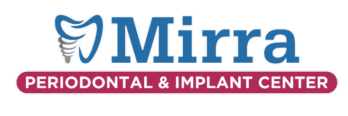More than 40,000 Americans are diagnosed with oral or pharyngeal (throat) cancer annually, resulting in almost 8,000 deaths. The death rate for oral cancer is higher than that for cancer of the cervix, brain, liver, testes, kidney and ovaries, Hodgkin's disease, and malignant melanoma (skin cancer). Awareness of the risk factors and early symptoms of oral cancer help to ensure patient health.
Risks Factors for Oral Cancer
Research shows strong links between tobacco use and oral cancer. At least 75 percent of those diagnosed with oral cancer have either smoked or chewed tobacco. Excessive alcohol usage is also a risk factor, making individuals who abuse both tobacco and alcohol particularly susceptible. Other risk factors for oral cancer include:
- Prolonged exposure to sunlight
- Certain strains of human papilloma virus (HPV)
- Eating a diet deficient in fruits and vegetables
- Poor oral hygiene
- Ill-fitting dentures
Age is also a risk factor, since most people are over the age of 40 when they are diagnosed with oral cancer.
Symptoms of Oral Cancer
Symptoms of oral cancer may be observed upon careful examination. The sooner they are detected and treated, the better. The following may be symptoms of oral cancer and should be reported to the dentist upon discovery.
- White or red patches of tissue in the mouth
- Small ulcers that may look like canker sores
- Lumps or masses inside the mouth or neck
- Wart-like masses on the oral or facial region
- Hoarseness that lasts for a significant period
Hoarseness that persists for a significant period of time, sores that do not heal within 14 days, or pain or difficulty swallowing, speaking or chewing should also be reported to the dentist.
Examinations for Oral Cancer
Part of a comprehensive dental examination is an examination of the lips, tongue, inner cheeks and upper and lower palates. The dentist looks for an abnormalities that may be first indicators of a malignancy. Patients should also perform examinations of their own mouths. Examinations for oral cancer should include:
- Removing any dentures
- Looking at and feeling the inside of the lips and the front of the gums
- Tilting the head back to look at and feel the roof of the mouth
- Pulling out the cheek to examine its inner surface
- Looking at the back gums
- Pulling out the tongue and looking at all of its surfaces
- Feeling the neck and under the lower jaw for lumps
Self-examinations for oral cancer should be performed monthly. Any lumps on the neck or under the jaw may be enlarged lymph nodes and should be reported to the dentist immediately.

